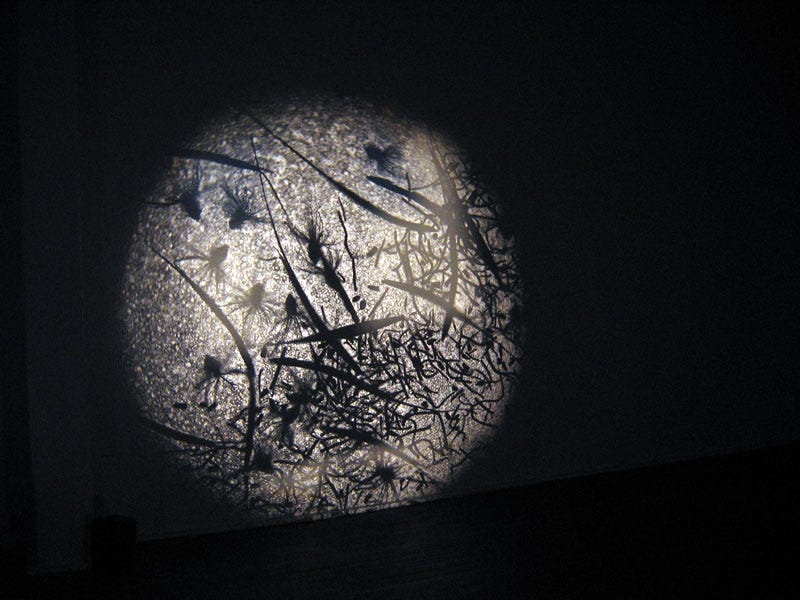A garden journal can be a powerful thing, packaged in an unassuming form.
They map so much, and are entangled with so many other aspects of being human. Place. Time. Culture. Personal histories. Ecosystems. Global disruption.
Personal assumptions. Longing. What has gone before, and what might possibly be next. In vegetal form, and many other forms, too.
I’ve always wanted to keep a long-term garden journal. I love reading them. Little chunks of watching and discoveries that unfold into a vast cycle of plants, seasons, and our human-ness - year on year of observations, heat, cold, harvests and plantings, turnings, patterns, and re-turnings.
I’ve also always been friends with the moon. In a personal way, or maybe just a fan-girl way. Living in a lot of different places, with night-time ambient light levels varying from deep city to vast, big sky country… I always stepped outside, every other night, to try and find the moon.
The moon has provided a distant-but-close friend. A constant, in amongst the frequent shambles. I didn’t know a great deal about the moon itself, but I knew that it would always be there - if I could just take a breath, take a moment, step outside, and find it in the sky. Or, sometimes not find it. We all need to crawl into our cave occasionally, as part of our cycles.
As our world’s seasons shift beyond recognition around us… my work with everyday climate action, teaching permaculture, growing food, saving seeds, writing and raising a teenager feels increasingly un-moored…
I am not religious, but I adore the first signs of spring, the cicadas arriving with summertime, the depth of winter - seaweed season when the beach is piled high from storms.
These are my saints days.
These moments through the seasonal cycles define time, practice, ritual and meaning, to me. The first zucchini flowering. Pulling the last of the carrots in late winter, to share with friends. The spring arrival of the Bell Currawongs to our valley. The autumn glut of tomatoes everywhere, followed by the first frost, and then the slower, colder months.
Here is my concern - if we cannot seem to rely on the seasons turning dependably, what can we rely on, to stay whole? How can I ground myself? What do we do with our hearts when ‘the first spring blossoms’ are not actually a good sign, because they’re much, much too early (or much too late) this season?
How can I mark time, and still keep small, beloved rituals that mark the turning of the year? How can I not break, with the grief of it all?
I have decided to look to the moon, and the living world around me, for some guidance.
The cycles of the moon affect so many things, and so many beings internal (and external) worlds. From the tides to rising sap to the extra light the full moon brings… so many species rely on it as an integral part of their lives on Earth.
Perhaps I need to listen to that wisdom - to help me ground, and keep going.
Our moon is a much older calendar and clock than the sun. Before we as a species stepped to the frantic beat of the hour, defined by the solar clock, the day of the month and the phases of the moon was enough to organise around.
Moon time. A method for de-colonising time, some would say. Learning to attune to what the different phases of the lunar cycle means, what it signifies in the living world, what it changes, and how to learn, and work with that.
One of the definitions of a Lunistice is the 18.6 year period which the moon takes to move from it’s northern-most moonrise point on the horizon, to it’s southernmost, and back again.
A lunar solstice. The ‘18.6 years’ bit is to do with various things, the tilt of the moon’s elliptical orbit - and some other stuff. We can go into that later.
So - for the moon to return to its current point on the horizon - right where I can see it rising now, just over the Snug Tiers, the biggest mountains in our valley…
…will take 18.6 years. That’s a long cycle. Or so it feels, right now, to me.
Can I keep an every-quarter-moon journal of plant kin, learning to ‘re-member’ with the place that i live, and the moon also, for a whole lunistice?
I’m up for trying.
Here we go, then. I’d love you to join me x
Roadside seeds, deconstructed slide projector, Kellerberrin laneway wall, nighttime. Njaki Njaki Nyoongar country, 2005... from a residency I did at IASKA, back in my 20’s when I was lucky enough to be a fulltime artist working with light, and the living world.
I guess the crushing hard on plants and the moon goes way back, for me.




What a beautiful idea and invite, I shall look forward to journeying with you. Xo